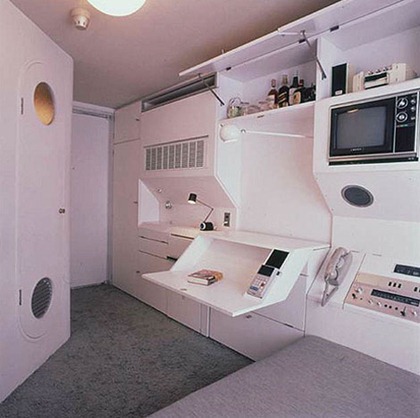The 60s and 70s were an exciting period for Japanese architecture. In particular, the Metabolist Movement which was founded by a group of futuristic visionaries, including late architect Kisho Kurokawa, put forth ideas of “large scale, flexible and extensible structures that facilitate an organic growth process”. Perhaps the most exemplary metabolic building is the Nakagin Capsule Tower built to accommodate bachelor salary-men in downtown Tokyo.
Completed in 1972, Kisho Kurokawa designed the 14-story tower of 140 pre-assembled individual capsules hoisted by a crane and bolted to the concrete core shaft. Each capsule unit is complete with appliances and furniture for a single dweller, and by connecting additional units, can accommodate a single family. Designed to be adaptable and sustainable with the capsules’ ability to be removed and replaced for upgrades.
The Nakagin Capsule Tower has been short-listed for the World Heritage by the International Committee of Docomomo International since 1996. However it is currently at the mercy of the wrecking ball, and efforts are still being made to preserve this masterpiece.
On April 15, 2007, the building's residents, citing squalid, cramped conditions as well as concerns over asbestos, voted to demolish the building and replace it with a much larger, more modern tower. In the interest of preserving his design, Kurokawa proposed taking advantage of the flexible design by "unplugging" the existing boxes and replacing them with updated units, a plan supported by the major architectural associations of Japan; the residents countered with concerns over the building's earthquake resistance and its inefficient use of valuable property adjacent to the high-value Ginza. A developer for the replacement has yet to be found, partly because of the late-2000s recession.




No comments:
Post a Comment